YOGA as Therapeutic Exercise
A Practical Guide for Manual Therapists
Luise Wrle, BSc(Hons) Osteopathy MA
Yoga Teacher and Teacher Trainer, long-standing student of Yogcrya B.K.S. Iyengar, Munich, Germany
Erik Pfeiff, DiplPsych
Clinical Psychologist and Psychotherapist, Manual Therapist
Advanced Aikido Teacher, Munich, Germany
Churchill Livingstone
Front matter
YOGA as Therapeutic Exercise
For Elsevier
Commissioning Editor: Claire Wilson
Development Editor: Sheila Black
Project Manager: Jagannathan Varadarajan
Senior Designer: Stewart Larking
Illustration Manager: Gillian Richards
Illustrator: Graeme Chambers
YOGA as Therapeutic Exercise
A Practical Guide for Manual Therapists
Luise Wrle BSc(Hons) Osteopathy MA, Yoga Teacher and Teacher Trainer, long-standing student of Yogcrya B.K.S. Iyengar, Munich, Germany
Erik Pfeiff DiplPsych, Clinical Psychologist and Psychotherapist, Manual Therapist; Advanced Aikido Teacher, Munich, Germany
Photography by
Wilfried Petzi Munich, Germany
Forewords by
Yogcrya B.K.S. Iyengar Ramma i Iyengar Memorial Yoga Institute, Pune, India
i Iyengar Memorial Yoga Institute, Pune, India
Professor Laurie Hartman DO PhD, Associate Professor of Osteopathic Technique, British School of Osteopathy, London, UK

Copyright

2010 Elsevier Ltd. All rights reserved.
No part of this publication may be reproduced or transmitted in any form or by any means, electronic or mechanical, including photocopying, recording, or any information storage and retrieval system, without permission in writing from the publisher. Details on how to seek permission, further information about the Publishers permissions policies and our arrangements with organizations such as the Copyright Clearance Center and the Copyright Licensing Agency, can be found at our website: www.elsevier.com/permissions.
This book and the individual contributions contained in it are protected under copyright by the Publisher (other than as may be noted herein).
ISBN 978-0-7020-3383-4
British Library Cataloguing in Publication Data
A catalogue record for this book is available from the British Library
Library of Congress Cataloging in Publication Data
A catalog record for this book is available from the Library of Congress
Notices
Knowledge and best practice in this field are constantly changing. As new research and experience broaden our understanding, changes in research methods, professional practices, or medical treatment may become necessary.
Practitioners and researchers must always rely on their own experience and knowledge in evaluating and using any information, methods, compounds, or experiments described herein. In using such information or methods they should be mindful of their own safety and the safety of others, including parties for whom they have a professional responsibility.
With respect to any drug or pharmaceutical products identified, readers are advised to check the most current information provided (i) on procedures featured or (ii) by the manufacturer of each product to be administered, to verify the recommended dose or formula, the method and duration of administration, and contraindications. It is the responsibility of practitioners, relying on their own experience and knowledge of their patients, to make diagnoses, to determine dosages and the best treatment for each individual patient, and to take all appropriate safety precautions.
To the fullest extent of the law, neither the Publisher nor the authors, contributors, or editors assume any liability for any injury and/or damage to persons or property as a matter of products liability, negligence or otherwise, or from any use or operation of any methods, products, instructions, or ideas contained in the material herein.


Printed in China 
Forewords
The majority of people live on their emotions. This leads to disturbance of their body hormones, as well as to economic and mental stress, all of which create imbalance in physico-physiological, physio-psychological and psycho-neurological systems.
In yogic science, the sanas and pr ymas are particularly helpful in generating and distributing life-saving energy wherever and whenever it is needed, so that each cell in the body revibrates with sound health, satisfaction, contentment, and a composed state of attention and awareness in the brain and mind.
ymas are particularly helpful in generating and distributing life-saving energy wherever and whenever it is needed, so that each cell in the body revibrates with sound health, satisfaction, contentment, and a composed state of attention and awareness in the brain and mind.
Luise Wrle and Erik Pfeiffs work, Yoga as Therapeutic Exercise A Guide for Manual Therapists, may serve as a handbook to help suffering humanity to achieve better health and a better way of living.
Luise has undergone training at my Institute in Pune, India, on remedial classes and has undertaken this work in presenting the curative aspects of yoga for developing a sound, healthy immune system.
Yoga is a powerful preventive system. It has the power to eradicate psychosomatic or somatopsychic diseases completely. In cases where a complete cure is not possible, this method develops that enduring power and keeps the disease in check.
Luise Wrle and Erik Pfeiff have covered the subject well and I am sure that this manual will add further knowledge to increase understanding of the subject as a healing art and science.
B.K.S. Iyengar
Luise Wrle is a yoga teacher of considerable experience, who became interested in Osteopathy after translating for me at many conferences. She qualified as an osteopath in 2005.
Erik Pfeiff is a manual therapist and psychotherapist; dedicated to his own yoga practice, he has also contributed many of the basic ideas in this book.
Throughout three decades of cooperation, Luise and Erik have taught many patients to practice yoga and have observed the benefits of this for greater treatment success. They have also taught patients how to develop mindfulness and the sensitivity to adjust their individual practice to their capacity and conditions.
This book links the manual therapists diagnostic tools to a wide variety of basic exercises and guides the reader, in small steps, into a more complex task and a deeper understanding of the practice.
The authors understanding of the theory of osteopathy and their knowledge of yoga has proved extremely useful to their teaching. The tests and diagnoses help design and programme the work the patient needs to do to achieve a good result. Patients quickly become and remain motivated, as the results soon become apparent. The use of breathing, which is a special part of yoga, has been a major part of this work, as have modifications of the basic exercises.Why should patients exercise at all? This book illustrates what can be done with exercises designed for individual patients. Supervision of exercise to ensure accuracy is emphasised. Most patients will feel the benefit of the exercises and a sense of achievement, knowing that it is their work and cooperation that gets results.
Next page

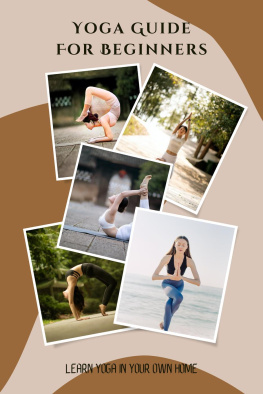
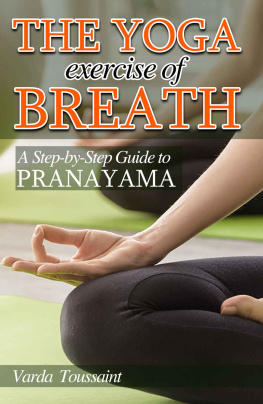
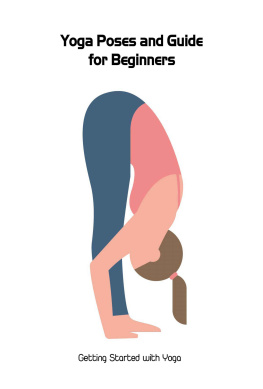

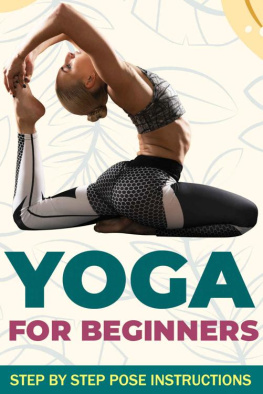
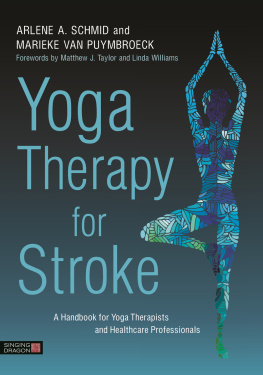
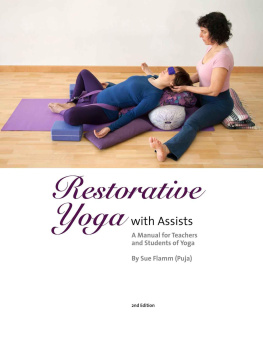
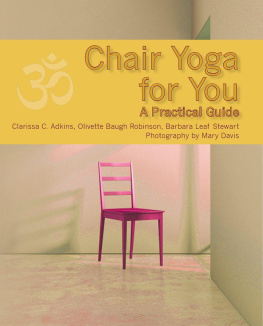
 i Iyengar Memorial Yoga Institute, Pune, India
i Iyengar Memorial Yoga Institute, Pune, India




 ymas are particularly helpful in generating and distributing life-saving energy wherever and whenever it is needed, so that each cell in the body revibrates with sound health, satisfaction, contentment, and a composed state of attention and awareness in the brain and mind.
ymas are particularly helpful in generating and distributing life-saving energy wherever and whenever it is needed, so that each cell in the body revibrates with sound health, satisfaction, contentment, and a composed state of attention and awareness in the brain and mind.